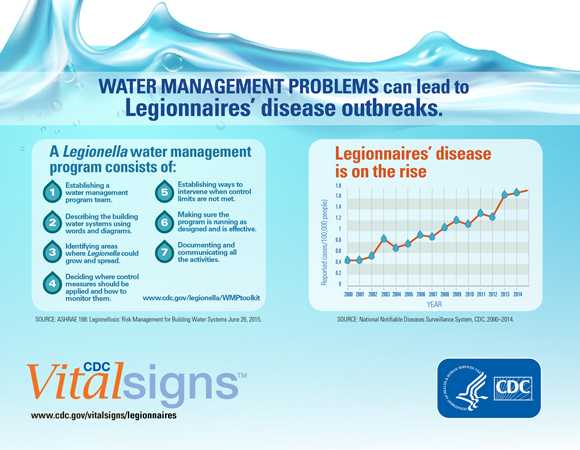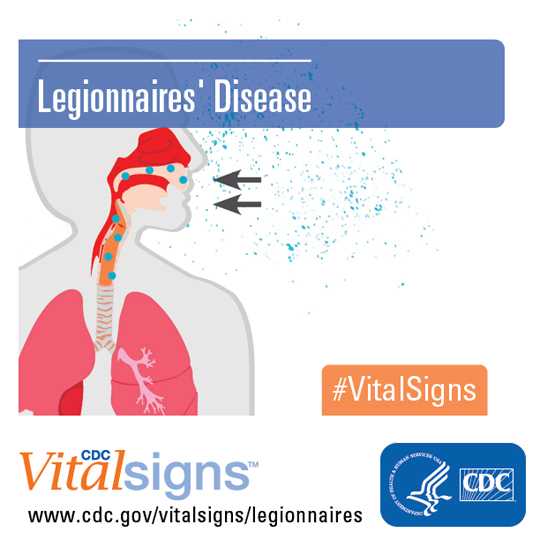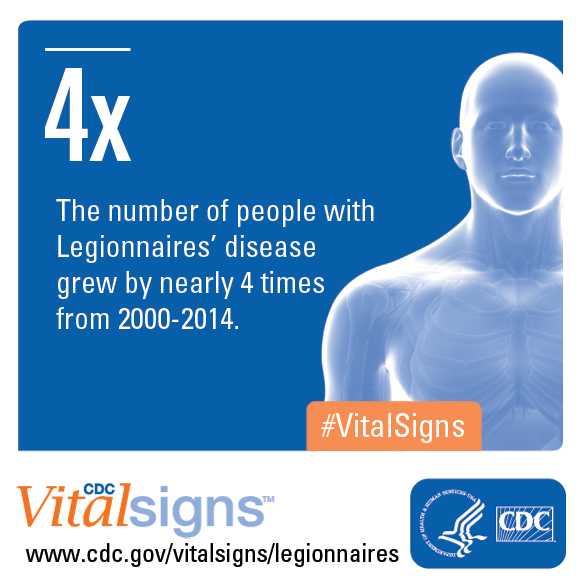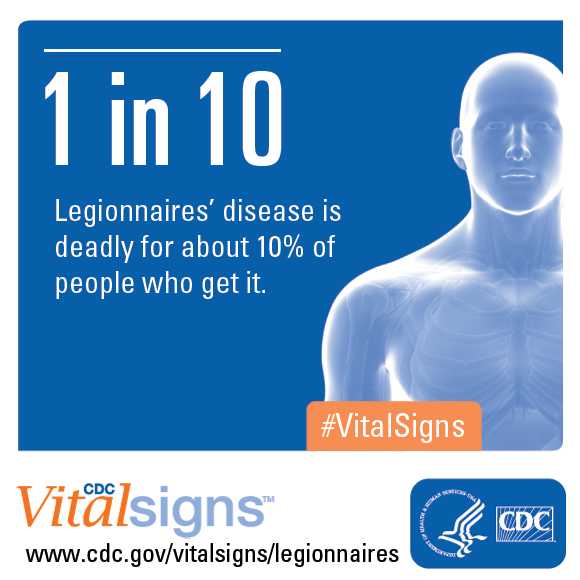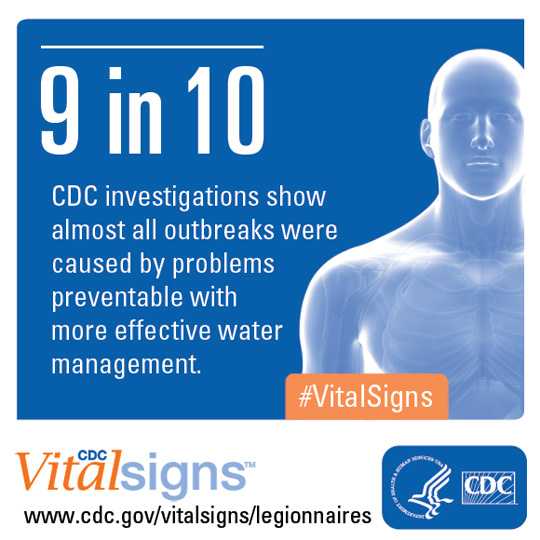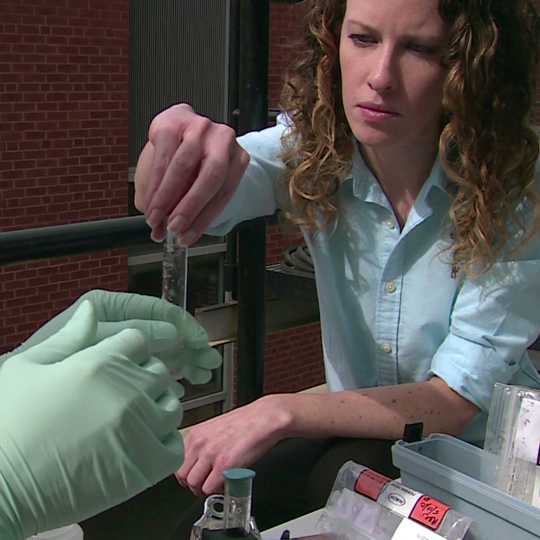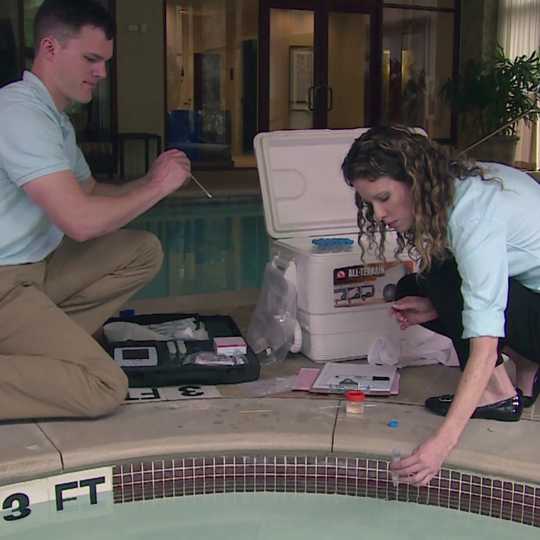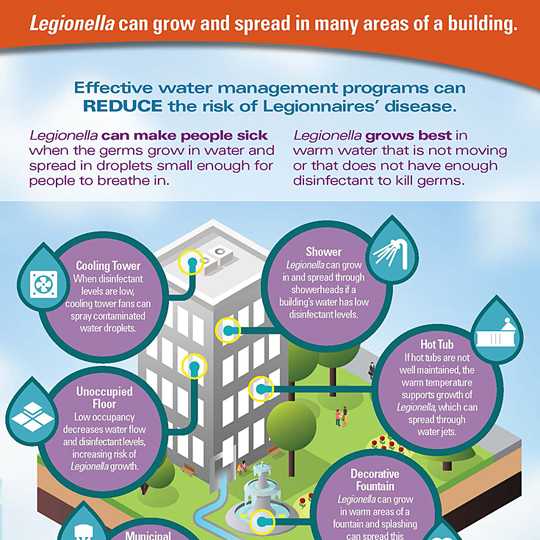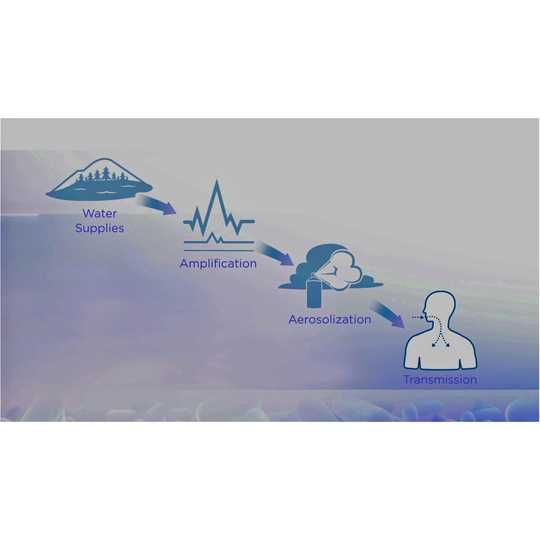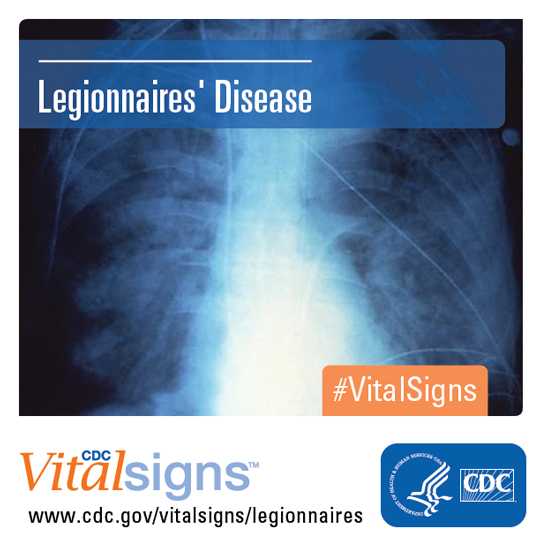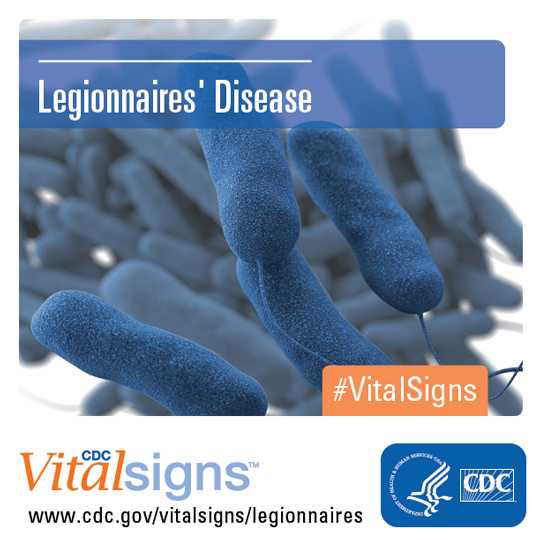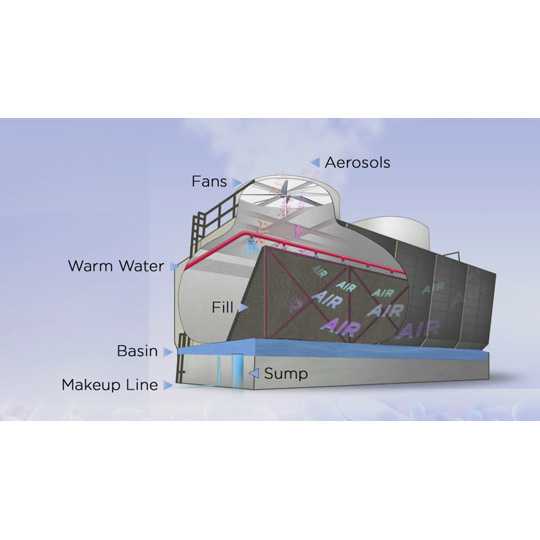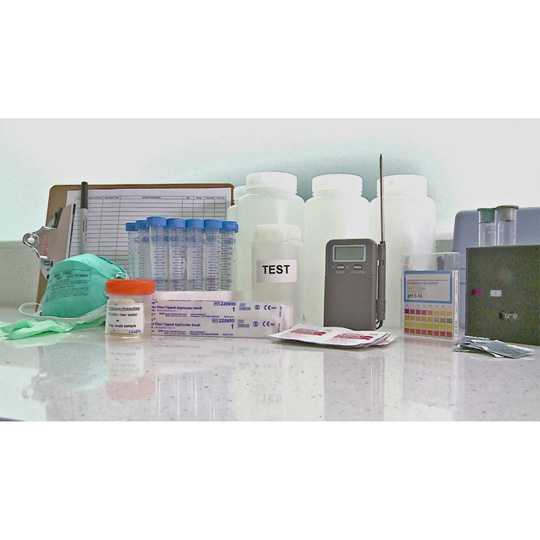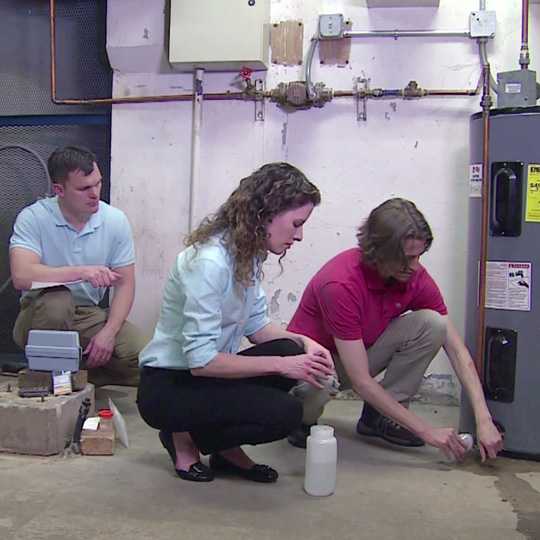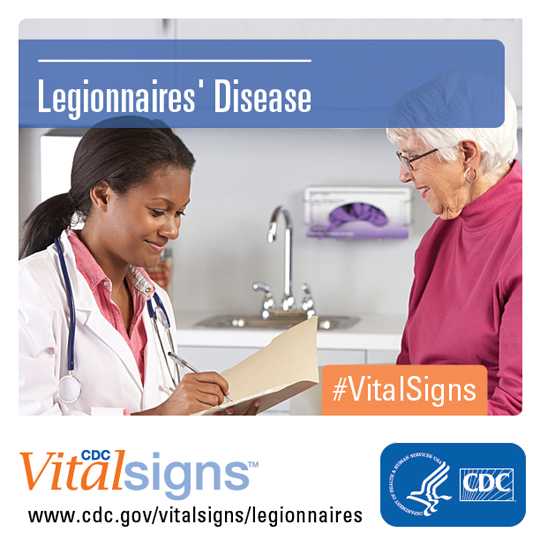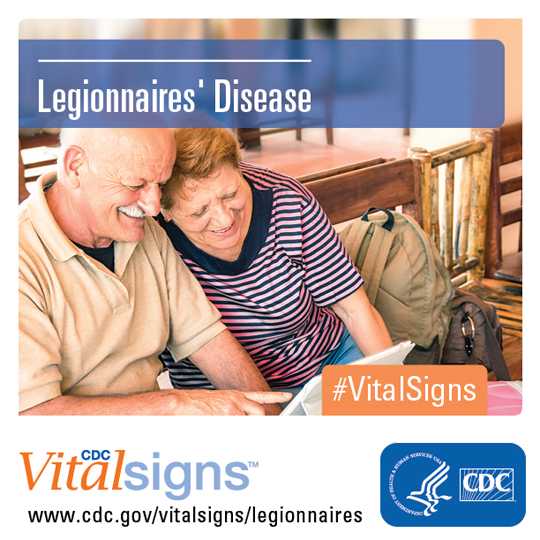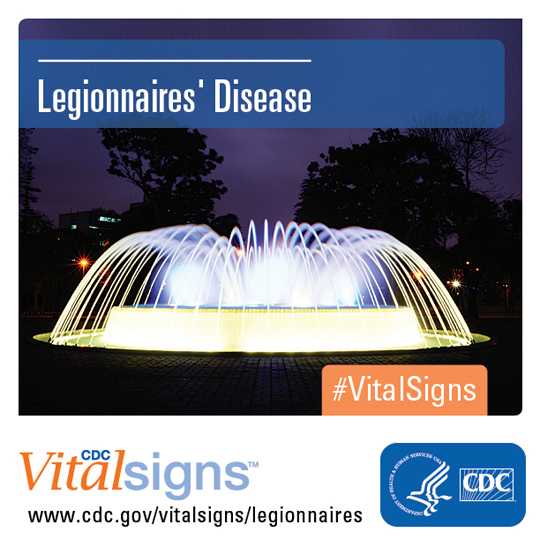Legionnaires' disease
Water management problems can lead to outbreaks
In the last year, about 5,000 people in the United States were diagnosed with Legionnaires’ disease, which is a deadly bacterial lung infection for 1 in 10 people who get it according to a new CDC Vital Signs report.
Unlike most respiratory infections, Legionnaires’ disease is generally not spread from person to person — it is caused by breathing in small water droplets contaminated with Legionella. Looking back over all of the building-associated outbreaks that CDC investigated from 2000 through 2014 showed that almost all of these outbreaks were caused by problems that could have been prevented with more effective water management.
Other key findings in the Vital Signs report show that:
- The number of people being diagnosed with Legionnaires’ disease in the United States grew by nearly 4 times from 2000 through 2014.
- Approximately 80% of Legionnaires’ disease outbreaks that CDC investigated from 2000 through 2014 occurred in hotels, long-term care facilities, and hospitals.
- Most Legionnaires’ disease outbreaks CDC investigated occurred because water systems in buildings were not well maintained; problems identified included process failures, human error, equipment breakdowns, or changes in water quality from reasons external to the building itself that led to growth of Legionella in the water.
CDC is urging building owners and managers to follow newly published standards that promote water management programs aimed at reducing the risk of Legionnaires’ disease. To support building owners and managers in this, CDC released a toolkit on Developing a Water Management Program to Reduce Legionella Growth & Spread in Buildings: A Practical Guide to Implementing Industry Standards. The toolkit interprets the guidance in ASHRAE Standard 188, provides a checklist and many examples to help identify where Legionella could grow and spread, and offers planning solutions to help reduce that risk.
Steps to develop a Legionella water management program include:
- Establish a water management program team.
- Describe the building water systems using text and flow diagrams.
- Identify areas where Legionella could grow and spread.
- Decide where control measures should be applied and how to monitor them.
- Establish ways to intervene when control limits are not met.
- Make sure the program is running as designed and is effective.
- Document and communicate all the activities.
Contact Information
CDC Media Relations
(404) 639-3286
media@cdc.gov
Vital Signs Links
Factsheet:
English [6.2MB]
Spanish [6.26MB]
Spokespersons
Nancy Messonnier, MD
“Years of outbreak response have taught us where to find Legionella hot spots. The toolkit will help building owners and managers better understand where those hot spots are and put measures in place to reduce the risk of Legionnaires’ disease.”
CAPT Nancy Messonnier, MD, Director of CDC’s National Center for Immunization and Respiratory Diseases
Cynthia Whitney, MD, MPH
“Legionnaires’ disease is often serious because it affects people who are already vulnerable, like older adults, people who smoke, and people whose immune systems are weak from other illnesses or medicines. As we enter the summer months, when we see more disease, clinicians can make sure to test their patients who have pneumonia symptoms if they are at risk for Legionnaires’ disease. Any time of year, those who have pneumonia symptoms – fever, cough, and difficulty breathing – should seek care quickly.”
CAPT Cynthia Whitney, MD, MPH, Chief, Respiratory Diseases Branch, CDC National Center for Immunization and Respiratory Diseases
CDR Jasen Kunz, MPH, REHS/RS
“Environmental health expertise is a key part of investigating Legionnaires’ disease outbreaks. Finding out where Legionella is hiding and removing it from the water systems are the most critical steps to prevent additional cases. CDC investigations of outbreaks show that 9 in 10 were caused by problems that could have been prevented with more effective water management.“
CDR Jasen Kunz, MPH, REHS/RS, Environmental Health Officer, Environmental Health Services Branch, CDC National Center for Environmental Health
Related Links
- Press Release: Water Management Programs Key to Preventing Legionnaires’ Disease Outbreaks – English | Spanish
- Vital Signs: Home | June 2016 Vital Signs | Fact Sheet PDF
- Vital Signs: (Spanish) Home | 2016 Junio – Signos Vitales | Fact Sheet PDF
- About Legionnaires’ Disease – English | Spanish
- CDC Healthy Water Website
Fact Sheets
- Legionnaires’ Disease Fact Sheet – English | Spanish
- Legionnaires’ Disease Fact Sheet for Clinicians
Guidelines
Planning Guides & Toolkits
- Developing a Water Management Program to Reduce Legionella Growth and Spread in Buildings: A Practical Guide to Implementing Industry Standards
- Drinking Water Advisory Communication Toolbox
- Emergency Water Supply Planning Guide for Hospitals and Healthcare Facilities
- Investigation Tools for Clusters and Outbreaks of Legionnaires’ Disease
- ASHRAE Standard 188: Legionellosis: Risk Management for Building Water Systems (ANSI Approved)
- ASHRAE Guideline 12-2000: Minimizing the Risk of Legionellosis Associated with Building Water Systems
- Legionellosis Guideline: Best Practices for Control of Legionella
- Prevention of Healthcare-Associated Legionella Disease and Scald Injury from Potable Water Distribution Systems
Videos
Podcasts
- Vital Signs – Legionnaires’ Disease – English | Spanish
- Vital Signs – Legionnaires’ Disease – [PSA – 0:60 seconds]
June 2016
- MMWR – Vital Signs: Deficiencies in Environmental Control Identified in Outbreaks of Legionnaires’ Disease, North America, 2000–2014 | PDF
October 2015
August 2015
- Outbreaks Associated with Environmental and Undetermined Water Exposures — United States, 2011–2012
- Surveillance for Waterborne Disease Outbreaks Associated with Drinking Water — United States, 2011–2012
January 2014
August 2011
December 2007
March 2004
June 2003
- Page last reviewed: June 7, 2016
- Page last updated: June 7, 2016
- Content source:



 ShareCompartir
ShareCompartir
